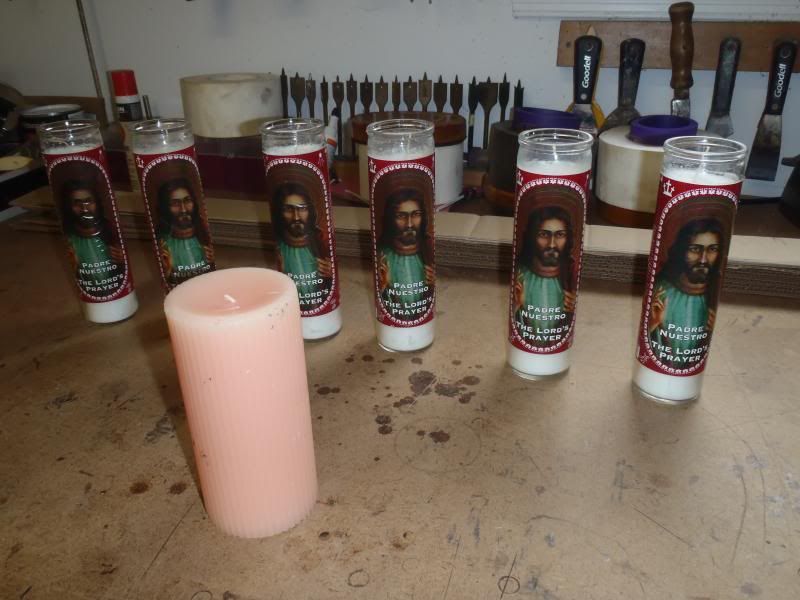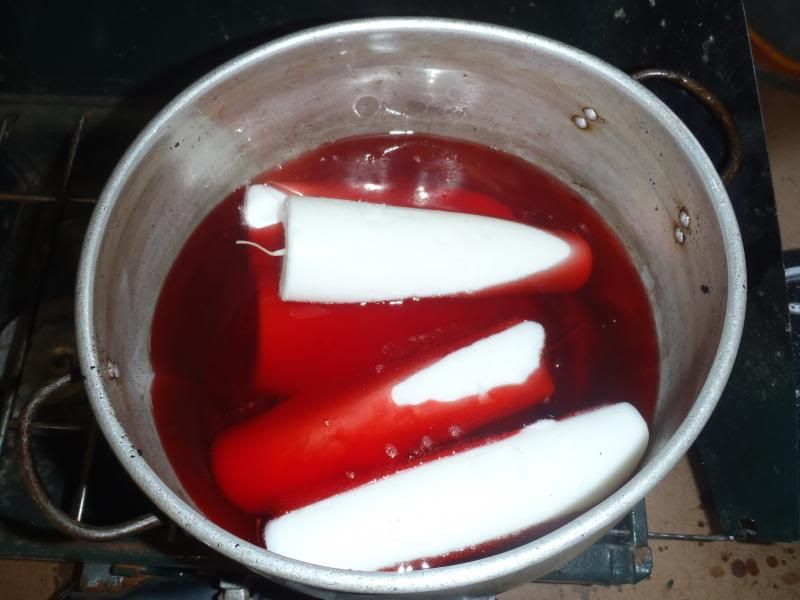G
Guest
Guest
I intentionally burned out the Fire In A Can (Mark II) on a long spring trip, burning it down to near zero wax. I was amazed that the spiral cardboard wick was still usefully intact after several years of use and several dozen of feeder bricks.
I could just refill the Mark II, but the spiral cardboard wick on the improved Mark III version built for a friend was much more loosely wrapped and threw a better flame. I heated up old the old Mark II roaster pan on a Coleman stove and the innards plopped out in one piece. One ugly piece, largely because I burned it down and overly charred the top of the too-tight wick without adding feeder bricks.

FWIW in progressive improvements, the cardboard spiral on the first-try Mark I was wrapped way too tight, leaving little space for wax except for that which soaked into the wick, and it burned out in a single night. (We had not thought to bring replenishment bricks of feeder wax).
The Mark II was looser of wick but still too tight, and the Mark III had nearly a pinkie-tip width of space between the wax spirals and was the most successful.
Fortunately a friend is planning a long cross-country trip of her own, and wanted to build a FIAC to take along for easy cheery fire comfort, so we can make two while we are melting wax.
She found a different style of inexpensive pot; a stock pot, still 9” wide but 7” inches tall instead of the shallow roasting pan 3 or 4 inches. For her car camping uses the extra pot space doesn’t much matter, and leaving a few inches of unfilled rim will lessen the need for a windscreen and eliminate hot wax spillage problems when the pot is full of melted wax and not level.
She ordered 50lbs of wax to split amongst new FIACs and feeder bricks. Best place and price for bulk wax has been Candlewic.com. She purchased the 140F melt point wax - $60 for 50 lbs, with $20 for shipping.
http://www.candlewic.com/store/Produ...raffin-Wax-140
Sounds pricey, but it was the least expensive bulk wax either of us could find and was enough to make two new FIACs (one with 6 lbs of wax, one with 9lbs) several dozen feeder bricks apiece and still have 20lbs left over for future use.
We cut the new cardboard wick spirals in the manly power tool overkill way, using a small bandsaw. Since the wax came in five 10lb blocks, each slab 12” x 18” x 1 ½” thick, making feeder bricks was as easy as scoring and snapping the blocks to make soap-bar sized bricks. The old Skil saw we used to score the blocks was likewise manly power tool overkill, but was easy and worked very well.
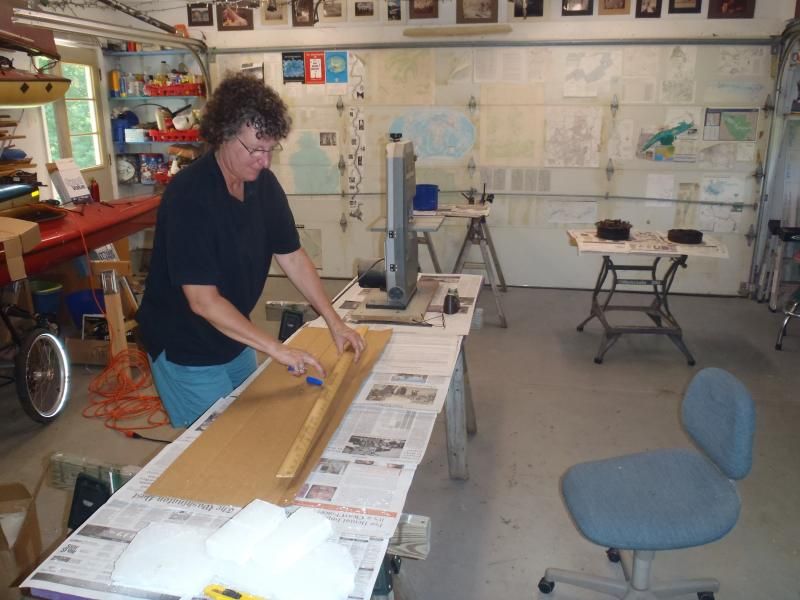
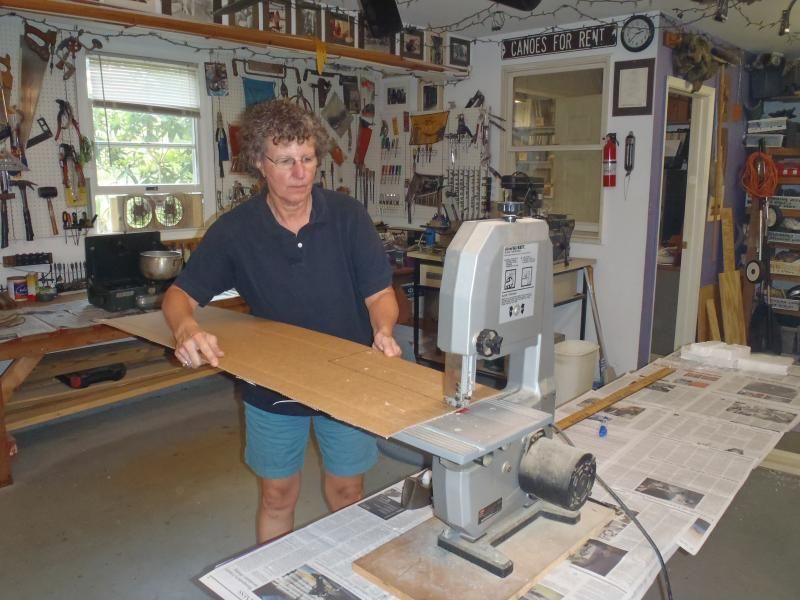
It helps to use a single long length of cardboard for the spiral, in this case the box from a carton of fluorescent lights.
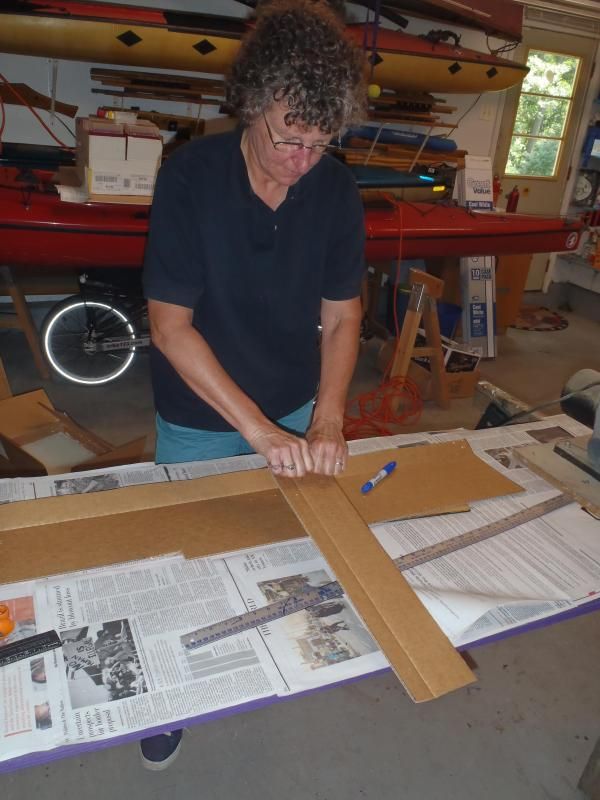
I had been using leftover candle stubs and Dollar-store finds for previous FIACs and having virgin slabs of wax was much easier and pound-for-pound cheaper. I’ll still keep and melt old candle stubs, but having clean slabs of bulk wax is worth it, especially if you make a couple or three FIAC’s and a supply of feeder bricks at the same time.
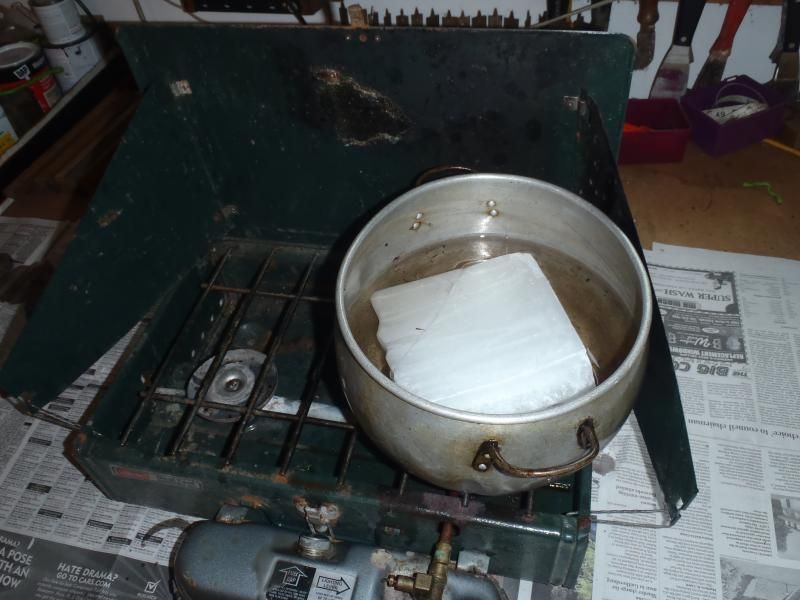
We wanted to have some feeder bricks with Citronella, which necessitated pouring our own melted wax slabs using small plastic boxes. If sprayed with silicon before pouring the wax brick will pop out easily once solidified. A small dollop of Citronella oil in each hot wax container made no difference in wax consistency
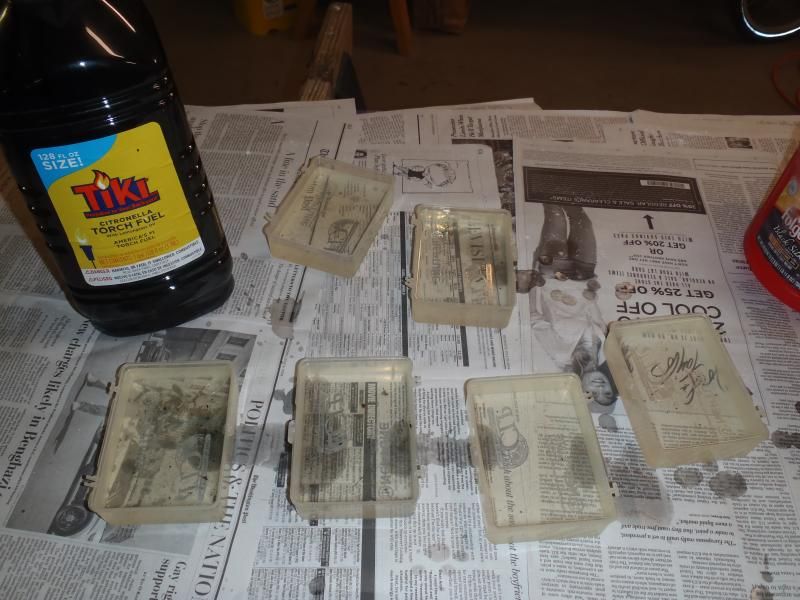
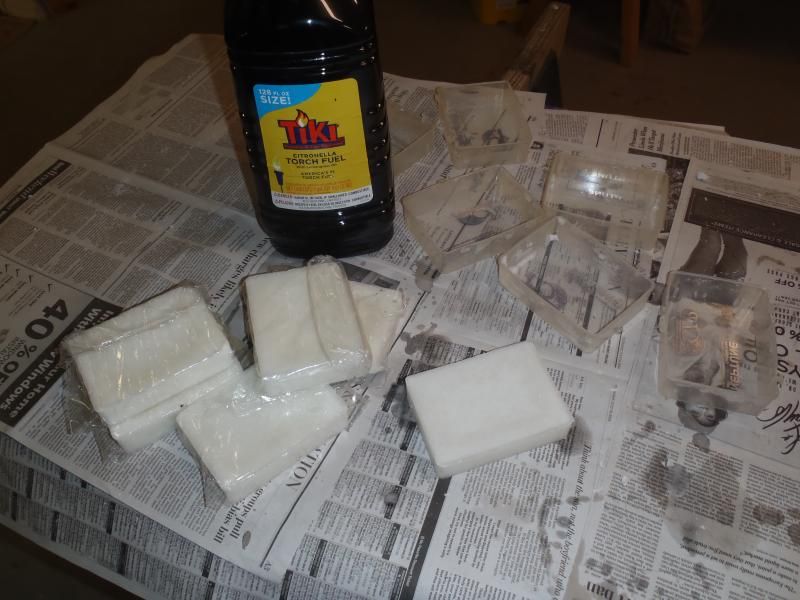
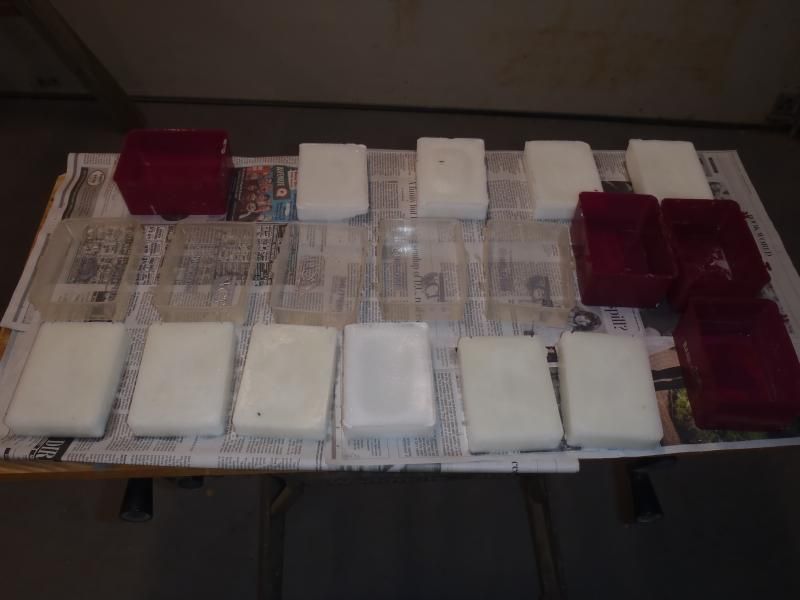
I am still perfecting the technique for holding the spiraled cardboard wick a pinkie-width open. Inserting a few folded cardboard vee seems to help with the open spacing and I left them extra tall to serve as easily lighted starters. The (raised) lid on the roaster pan still fits even with the tall starter wicks, and the flush lid on the stock pot likewise.
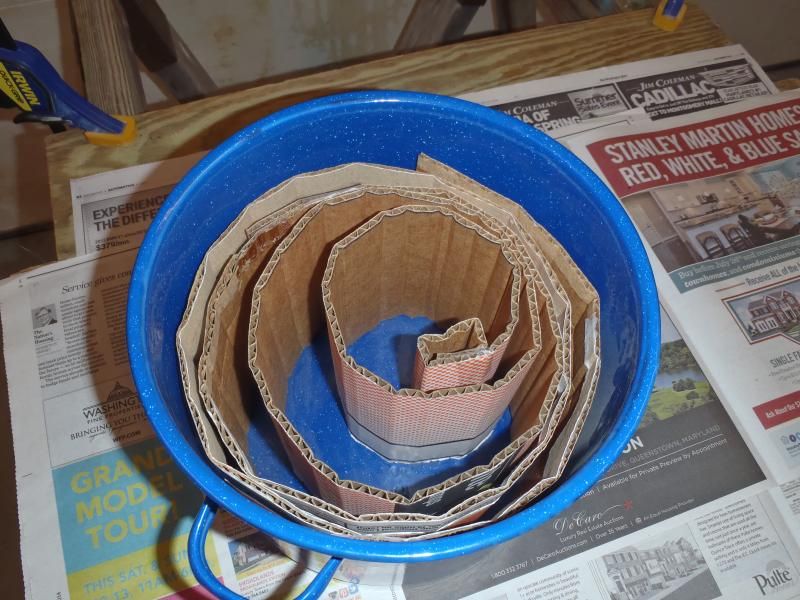
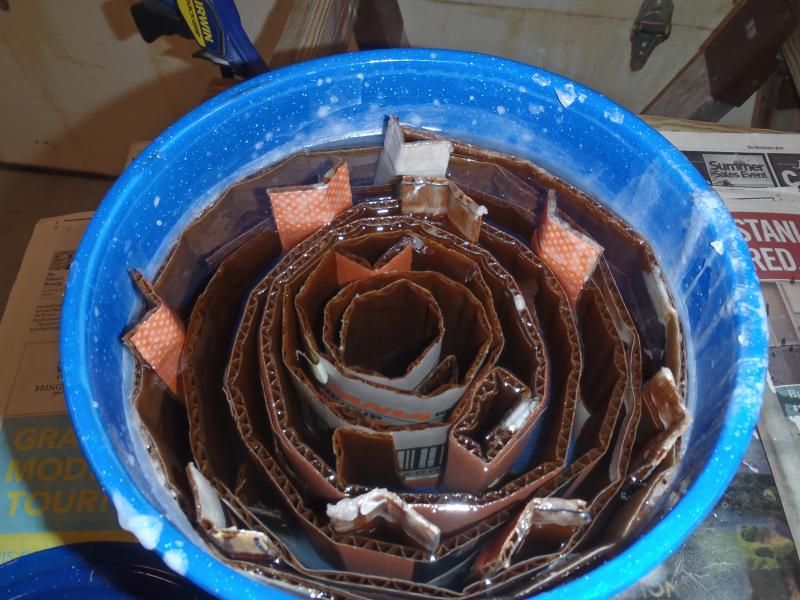
The actual wax pour in the pots needed three partially-filled, time-spaced pours; a level surface of hot wax leaves deep voids and crevasses once it penetrates the cardboard wick and hardens.

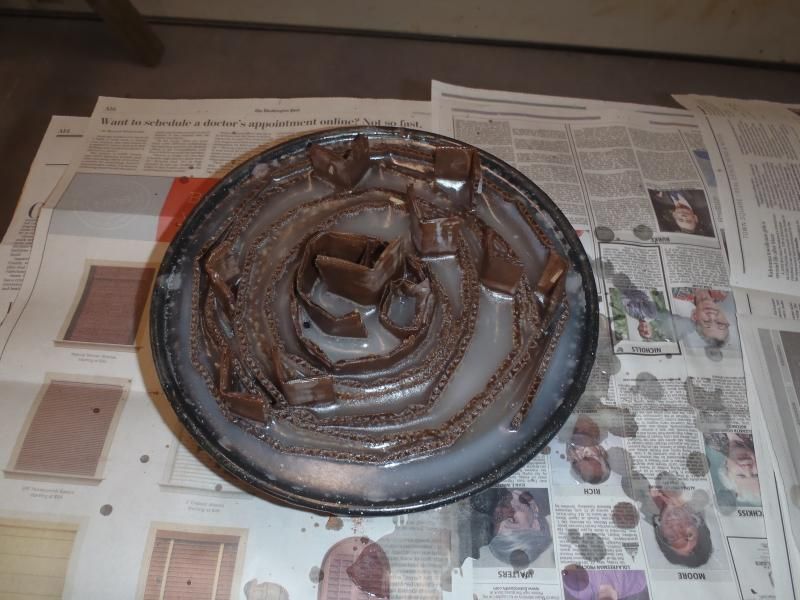
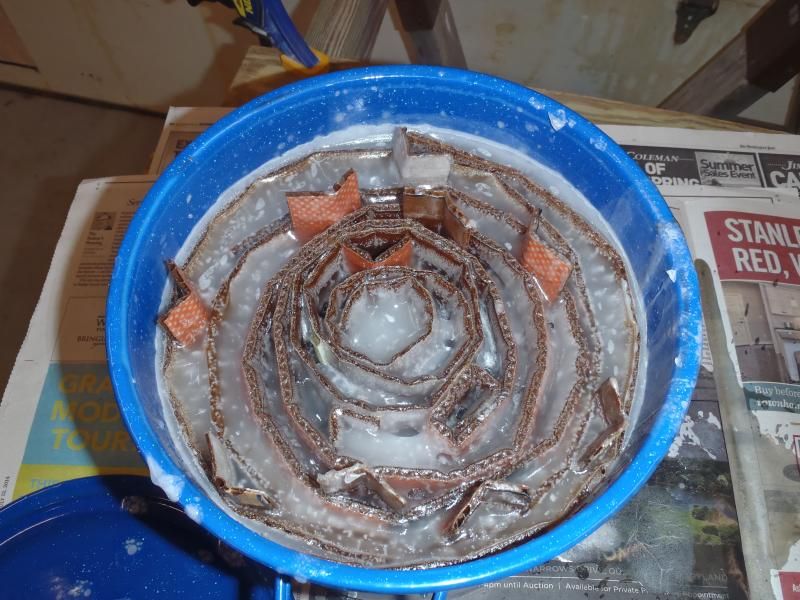
We’ll do a test burn with the stock pot version in a week when I deliver it. I think it is going to work very well, maybe better than the shallow roasting pans. Not only is it more spill proof and wind screened, but the best FIAC flames seem to emanate from the edge of the pot once the metal rim gets wax-boiling hot.

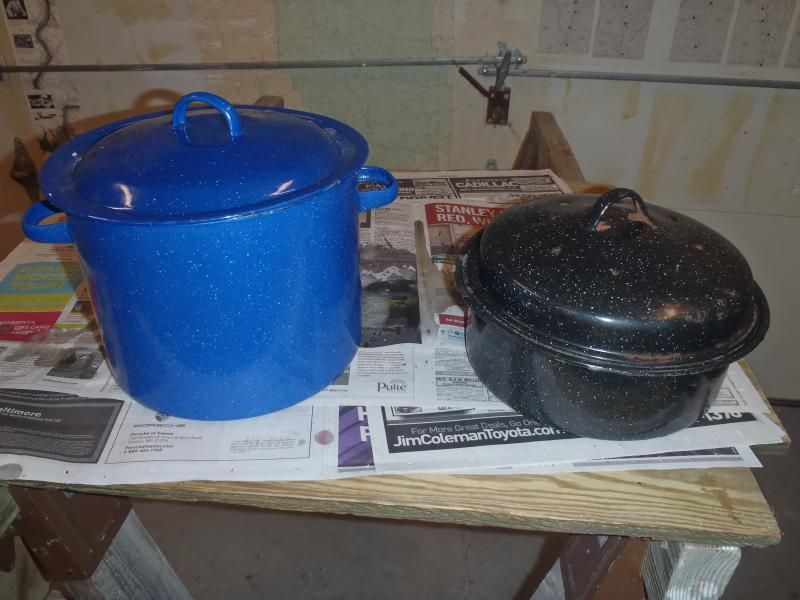
A word on pot styles. The initial experiment Mark I used a cookie tin. It worked, but having no lid handle meant it was hard to get the top on to snuff out the flames and it rusted in a few days tidal water time.
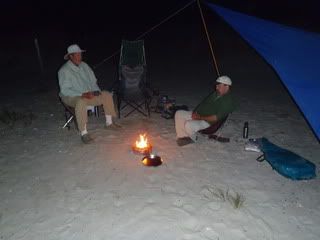
The Mark II round roasting pan was a better quality pot with a handle on the lid, which is a necessity if you want to keep the hair on your knuckles when snuffing out two foot tall flames.
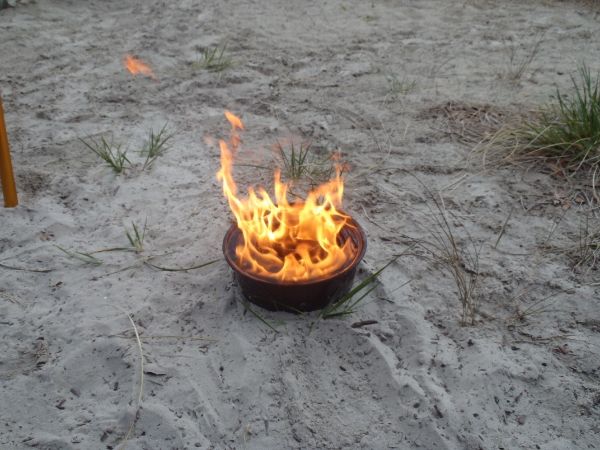
The Mark III was an oval roasting pan with handles on the lid and sides, as does the Mark IV stock pot. The side handles keep your fingers unsooty clean when picking up the pot after use.
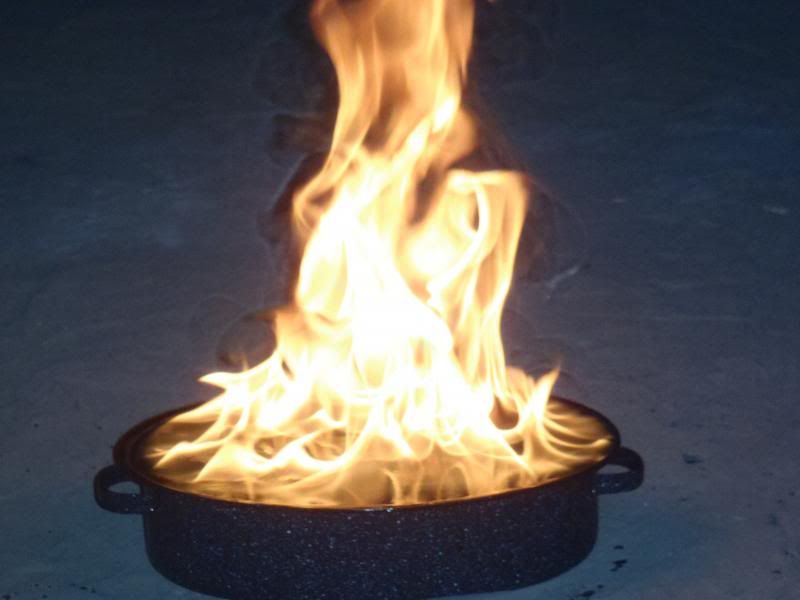

There is some spooky stuff in those flames

Total elapsed time to make two FIACs and dozens of feeder bricks - 2 hours, not counting wax hardening wait time.
I could just refill the Mark II, but the spiral cardboard wick on the improved Mark III version built for a friend was much more loosely wrapped and threw a better flame. I heated up old the old Mark II roaster pan on a Coleman stove and the innards plopped out in one piece. One ugly piece, largely because I burned it down and overly charred the top of the too-tight wick without adding feeder bricks.

FWIW in progressive improvements, the cardboard spiral on the first-try Mark I was wrapped way too tight, leaving little space for wax except for that which soaked into the wick, and it burned out in a single night. (We had not thought to bring replenishment bricks of feeder wax).
The Mark II was looser of wick but still too tight, and the Mark III had nearly a pinkie-tip width of space between the wax spirals and was the most successful.
Fortunately a friend is planning a long cross-country trip of her own, and wanted to build a FIAC to take along for easy cheery fire comfort, so we can make two while we are melting wax.
She found a different style of inexpensive pot; a stock pot, still 9” wide but 7” inches tall instead of the shallow roasting pan 3 or 4 inches. For her car camping uses the extra pot space doesn’t much matter, and leaving a few inches of unfilled rim will lessen the need for a windscreen and eliminate hot wax spillage problems when the pot is full of melted wax and not level.
She ordered 50lbs of wax to split amongst new FIACs and feeder bricks. Best place and price for bulk wax has been Candlewic.com. She purchased the 140F melt point wax - $60 for 50 lbs, with $20 for shipping.
http://www.candlewic.com/store/Produ...raffin-Wax-140
Sounds pricey, but it was the least expensive bulk wax either of us could find and was enough to make two new FIACs (one with 6 lbs of wax, one with 9lbs) several dozen feeder bricks apiece and still have 20lbs left over for future use.
We cut the new cardboard wick spirals in the manly power tool overkill way, using a small bandsaw. Since the wax came in five 10lb blocks, each slab 12” x 18” x 1 ½” thick, making feeder bricks was as easy as scoring and snapping the blocks to make soap-bar sized bricks. The old Skil saw we used to score the blocks was likewise manly power tool overkill, but was easy and worked very well.


It helps to use a single long length of cardboard for the spiral, in this case the box from a carton of fluorescent lights.

I had been using leftover candle stubs and Dollar-store finds for previous FIACs and having virgin slabs of wax was much easier and pound-for-pound cheaper. I’ll still keep and melt old candle stubs, but having clean slabs of bulk wax is worth it, especially if you make a couple or three FIAC’s and a supply of feeder bricks at the same time.

We wanted to have some feeder bricks with Citronella, which necessitated pouring our own melted wax slabs using small plastic boxes. If sprayed with silicon before pouring the wax brick will pop out easily once solidified. A small dollop of Citronella oil in each hot wax container made no difference in wax consistency



I am still perfecting the technique for holding the spiraled cardboard wick a pinkie-width open. Inserting a few folded cardboard vee seems to help with the open spacing and I left them extra tall to serve as easily lighted starters. The (raised) lid on the roaster pan still fits even with the tall starter wicks, and the flush lid on the stock pot likewise.


The actual wax pour in the pots needed three partially-filled, time-spaced pours; a level surface of hot wax leaves deep voids and crevasses once it penetrates the cardboard wick and hardens.



We’ll do a test burn with the stock pot version in a week when I deliver it. I think it is going to work very well, maybe better than the shallow roasting pans. Not only is it more spill proof and wind screened, but the best FIAC flames seem to emanate from the edge of the pot once the metal rim gets wax-boiling hot.


A word on pot styles. The initial experiment Mark I used a cookie tin. It worked, but having no lid handle meant it was hard to get the top on to snuff out the flames and it rusted in a few days tidal water time.

The Mark II round roasting pan was a better quality pot with a handle on the lid, which is a necessity if you want to keep the hair on your knuckles when snuffing out two foot tall flames.

The Mark III was an oval roasting pan with handles on the lid and sides, as does the Mark IV stock pot. The side handles keep your fingers unsooty clean when picking up the pot after use.


There is some spooky stuff in those flames

Total elapsed time to make two FIACs and dozens of feeder bricks - 2 hours, not counting wax hardening wait time.
Last edited:

